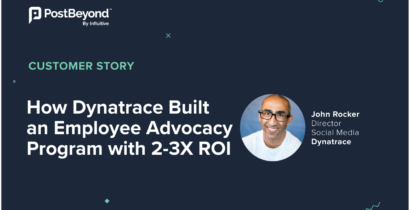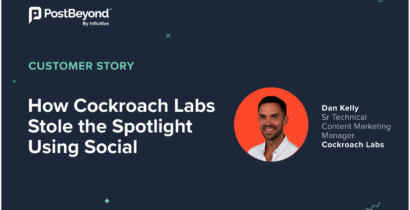How can you tell when a company has a strong culture?
We’ve all seen offices with foosball tables, beer fridges – maybe even catered lunches. Employees might appreciate these amenities (who doesn’t love free food?) but these aren’t necessarily indicative of a company that lives their values.
For 360insights, ensuring that the company values are not just understood, but embraced, is a defining part of their employer brand. This company makes culture and work experience a priority – and you’ll get a sense of it the minute you walk into their office.
Sarah Beatty (PostBeyond Customer Success Extraordinaire) and I traveled to 360insights’ office to learn more about why culture is such a critical element of a thriving company.
The Experts
 Travis Dutka – Culture Curator
Travis Dutka – Culture Curator
Travis spends most of his time on employee engagement, finding new ways to understand and measure the effectiveness culture, and building the best possible team for 360insights.
 Jason King – Team & Channel Engagement Manager
Jason King – Team & Channel Engagement Manager
Jason’s mandate is to build culture through communications, support recruiting efforts with marketing collateral and help formulate fun and informative communications with 360’s users.
The big question: why is culture important?
TD: If you ask 100 different people, you’ll get 100 different answers. To me, culture is table stakes. People have a choice of where they work, so you have to have a great company.
But how you define culture will dictate why it’s important. If you think culture is beer pong and keg stands, then why you think that’s important will be very different than if you have highly effective, motivated, and innovative teams – which is a different perspective, a different culture.
For me, culture is important because it’s what drives everything you do. The product, interactions with clients, relationships internally – it creates really effective teams.
And on top of that, you can do what makes you happy with people you want to be around.
“We believe that the unique culture we are building is our competitive advantage! Competitors may try to copy our technology or undercut our pricing, but they will never be able to match our passion and energy. Our culture leads us to amazing customer service and innovation that just can’t be beat.” – The Case for Culture at 360insights
MH: What are the pillars of your culture at 360insights? What are the values you uphold here?
JK: We do use “pillars” in our approach to culture. We call them the Four Pillars of Workplace Happiness:
- A sense of connection
- A sense of progress
- A sense of control
- Feelingof working towardhigherpurpose
“Connection” is the one that gets the most attention, because our team is scattered geographically. We’re trying to connect 300 people across buildings, cities, even countries. So how can we make sure that people feel we’re working together as a single organism?
On the individual level, we ask how we can give people a sense of progress. How can they feel like there’s always daylight ahead of them? Or that they can not only feel like their career is progressing here, but that they’re growing as a person?
A sense of control – do I know if I’m succeeding? Do I feel like my voice is heard? Do I feel like I can make a difference in this work?
Our CEO is great, he takes a lot of hard questions in meetings around those ideas. So if a sense of control is important to you, we can give you the mechanisms to engage with that.
And a sense of higher purpose – I could talk about that for a separate hour. We do tons of things that make it exciting.
If anyone is having one of those days where you’re feeling “below the line” at work, it’s good to know that we’re empowering people in Haiti, or we built a well in Rwanda. All of that stuff is really cool. And when you’re having a bad day, that sense of higher purpose keeps you in the groove.
But values – that’s a whole other question.
TD: Right, so those are the pillars we use as a framework to approach culture. We learned those from an organization called “Delivering Happiness.” There are other ones out there – like Maslow’s Hierarchy of Needs, the Bersin model from Deloitte – there are different theories with key drivers that define a “great place to work” as an organization.
We love the Delivering Happiness model, and we’ve seen it work.
So the way we package and express that is with our four core values:
- Be real and have fun
- Don’t find a fault, find a remedy
- Live in the possible
- It’s not what we say, it’s what we do
In addition to the values, we have we have three commitments that the company makes to us, and that we make to the company. They are:
- An unbelievable experience for our clients
- An unbelievable experience for employees
- Make a difference in the world
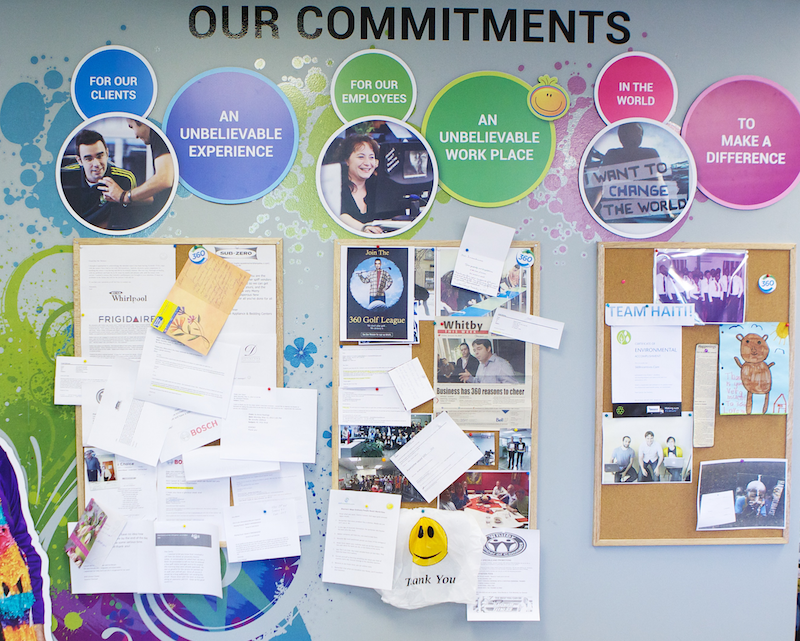
So between our values and our commitments, we have a roadmap and a compass.
 Our commitments act as a compass. At any given point in time, it won’t be fun here. But the goal is that it would be an unbelievable place to work. It’s the direction. And it’s the same with our clients – there are days where they aren’t super pumped, or they’re frustrated. We learn from those experiences, and keep going under the direction of “an unbelievable experience for our clients.”
Our commitments act as a compass. At any given point in time, it won’t be fun here. But the goal is that it would be an unbelievable place to work. It’s the direction. And it’s the same with our clients – there are days where they aren’t super pumped, or they’re frustrated. We learn from those experiences, and keep going under the direction of “an unbelievable experience for our clients.”

The values are like a roadmap. They’re more like rules of engagement for day-to-day interaction. This is how we approach each other, how we solve problems, how we engage with clients.
That’s how I like to position values and commitments during orientation for new employees.
SB: Out of curiosity – how did you define that? How do you start with a blank slate and define “what are we standing for?”
JK: That’s an important question. One of the most important parts of that idea is having your senior leadership be on board. They need to care about what kind of experience people are having at work.
Fortunately for us, our CEO sat alone in a room with a whiteboard before the company was even started, and said “here are my three commitments. I know that if I honour these three things – an unbelievable customer experience, an unbelievable place to work, making a difference in the world – then I’m going to be in the right direction.”
So we’ve had his buy-in since pre-Day 1.
TD: The values followed from a survey of our company (which at the time was 30 people), asking what values they hold or aspire to live by. We then compiled the results and had them voted on.
I think if you go to the extreme either way – whether that’s 100% employee generated, or 100% from senior leadership, you need to have employee buy-in.
JK: I agree. I like to say “co-create, don’t install.” It’s better if we all try to answer “what does it mean to work here?” and then decide.
MH: And how do you scale these values and commitments across the company? When you’re trying to unite employees across different regions, how do you make sure that employees all have a (relatively) similar work experience?
JK: I’d love to say there’s a formula for it – but here’s how we’re trying to do it.
A lot of people haven’t really thought about their own personal values before. They probably know them, but they’ve never given it intention.
As part of our onboarding, Travis walks them through a “personal values” exercise that we do that helps you detect what your top three are. It helps you understand whether this place is a good fit.
If you’re cynical, that sounds like “so basically…you drink the Kool-Aid?” But I think that if our values don’t resonate with you, then maybe this isn’t a good fit.
TD: There are key areas that we scale it. One thing we’ve learned over the years, is that there are two parts to culture:
The Fruit
The outward celebration of culture. The beer, the Red Bull, the fuzzy sock Fridays, the Halloween parade. These are the artifacts of culture. And if you try to scale that, then you have no substance.
Some companies try to mimic the artifacts (like “Google has nap pods, so we should have nap pods”) and it doesn’t work that way.
The Root
The root system is trust, integrity – your values. These are the components that make up your day-to-day activities.
So you can pick all of the fruit – but a bug or disease could still wipe it out. But if you have a strong root system, the fruit will come back. If you have no roots (only fruit), the fruit isn’t coming back.
The root system is what we try to focus on scaling – not the artifacts. Those will manifest themselves in their own unique ways.
Who and how you hire is one of the challenges here. If you’re hiring people who aren’t in line with your values, then it’s a great way to limit the growth of your culture, and potentially break what you have in place.
What you celebrate dictates what you encourage, too. If you celebrate those who stay late at the office, or speak the loudest in meetings, then that’s the behaviour that you’re encouraging.
But if you celebrate the values, like delivering on their promises, then that becomes the culture.
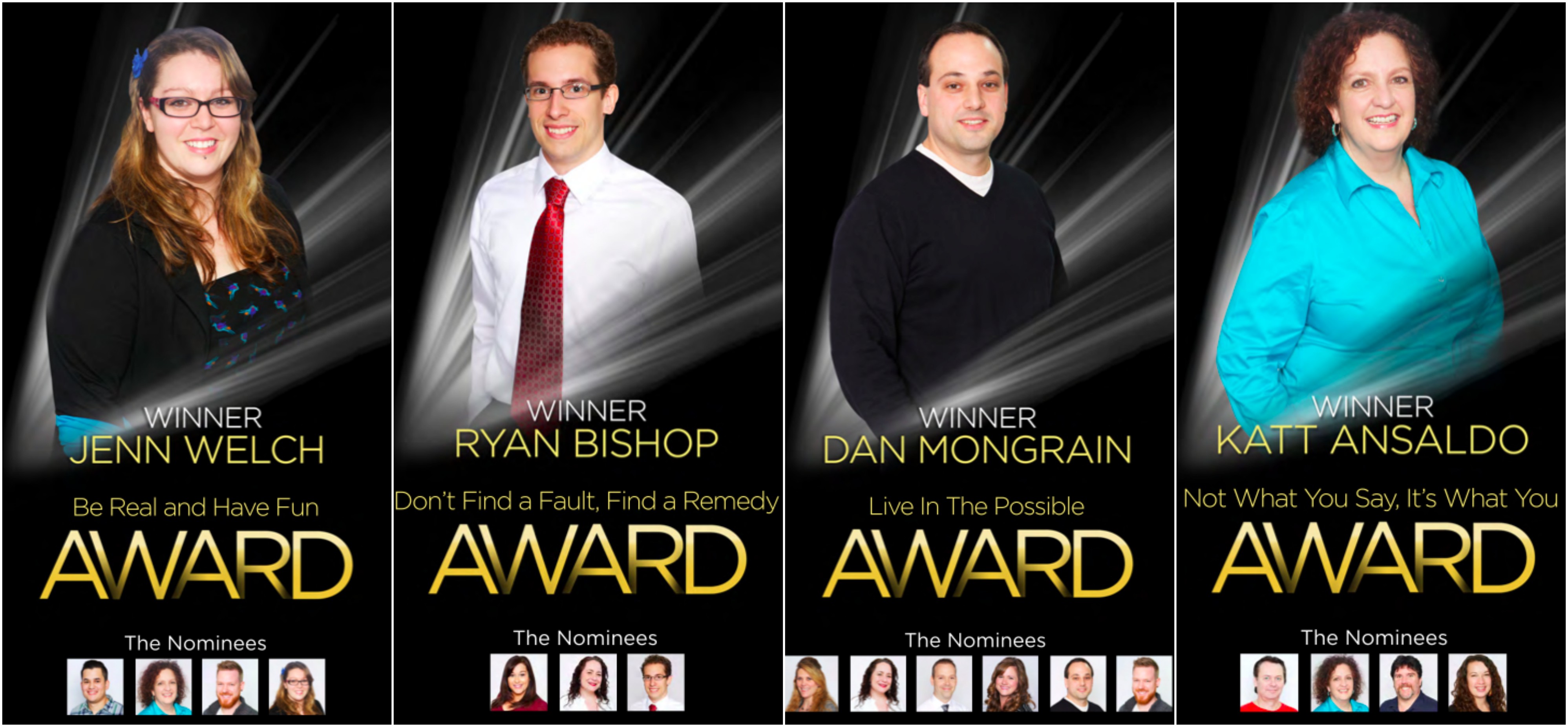 360insights awards employees who live their values in their annual yearbook – The Culture Book
360insights awards employees who live their values in their annual yearbook – The Culture Book
Measuring Culture
MH: What are some of the ways you measure the success of culture here?
TD: We need to look at the traditional metrics and tie it into the business. 10% turnover – what does that mean? Are we losing senior execs, or is it new employees going through onboarding?
JK: Looking at retention is almost too simple. It doesn’t consider the subtleties that do matter, like retaining people who aren’t a good fit.
TD: And when you do lose someone – no matter the reason – it takes 3-9 months minimum to have a new person brought up to speed. So you have 9 months of salary that you’re paying that person, plus the salary of the trainer, and potentially severance for the person who left initially. Recruiting costs, interview time – it’s expensive to lose people!
I’ve read various stats that find it takes anywhere from 90%-300% of a person’s annual salary to replace them. It’s not a nominal number. So we need to start thinking of company culture as a profit centre, rather than a loss leader.
Some of the tactics we use to measure success in culture here at 360 are:
-ENPS Score (Employee Net Promoter Score)
We conduct ENPS surveys quarterly to keep a pulse on what’s happening.
We’re also experimenting with different surveys that take a deeper dive into culture effectiveness. We’re on our second quarter using the “Balance Scorecard” which looks at multiple facets of the business:
- Budget per department
- ENPS
- Client NPS
Typically, companies look at revenue as a defining measure of success. If a company hits their revenue targets, that’s seen as “successful.” But we’re adding client and employee satisfaction into that equation.
JK: We can cross-reference to see if teams with a high ENPS are achieving revenue, or other measures as well.
This goes back to the “why” of culture. If you have a workplace that honours the whole person, where they feel like they can come in every day and do an amazing job, then you’ll see that reflected in revenue.
Tech & Culture
MH: There’s so much technology out there dedicated to improving the work experience. Tell us about some of the ways you’ve been using that at 360insights.
JK: Connectivity is a huge focus here. We have our daily team huddles, and in an ideal world, we would have the whole team present for that.
The reality is: we have a bunch of people attend in person, some attend via WebEx, and then we distribute a video on PostBeyond every day.
For us, we ask “how can everyone know what they need to know?” or “how can we look for opportunities to connect everybody?”
So for example, we have groups dedicated to coffee connoisseurs, Crossfit, the cycling club, or the crafters. There are all these different communities here that connect employees – regardless of their location.
TD: Originally, we went with PostBeyond for our Sales team. But once we saw the functionality and how our team was using it, we realized it could be more of a content hub to keep everyone in the company connected. We have a lot of data in Sharepoint, but it wasn’t totally accessible.
JK: Right, we’re using PostBeyond to make content accessible. It makes it easier for employees to find what they need.
TD: A lot of our team who are either taking calls or on the road aren’t able to attend our daily huddles, but I see the 360 Super Connecter (our PostBeyond hub) on their screen all the time. If we have upcoming events, you can find the posters in the Super Connecter. If you want to find out what’s happening at 360, you go there.
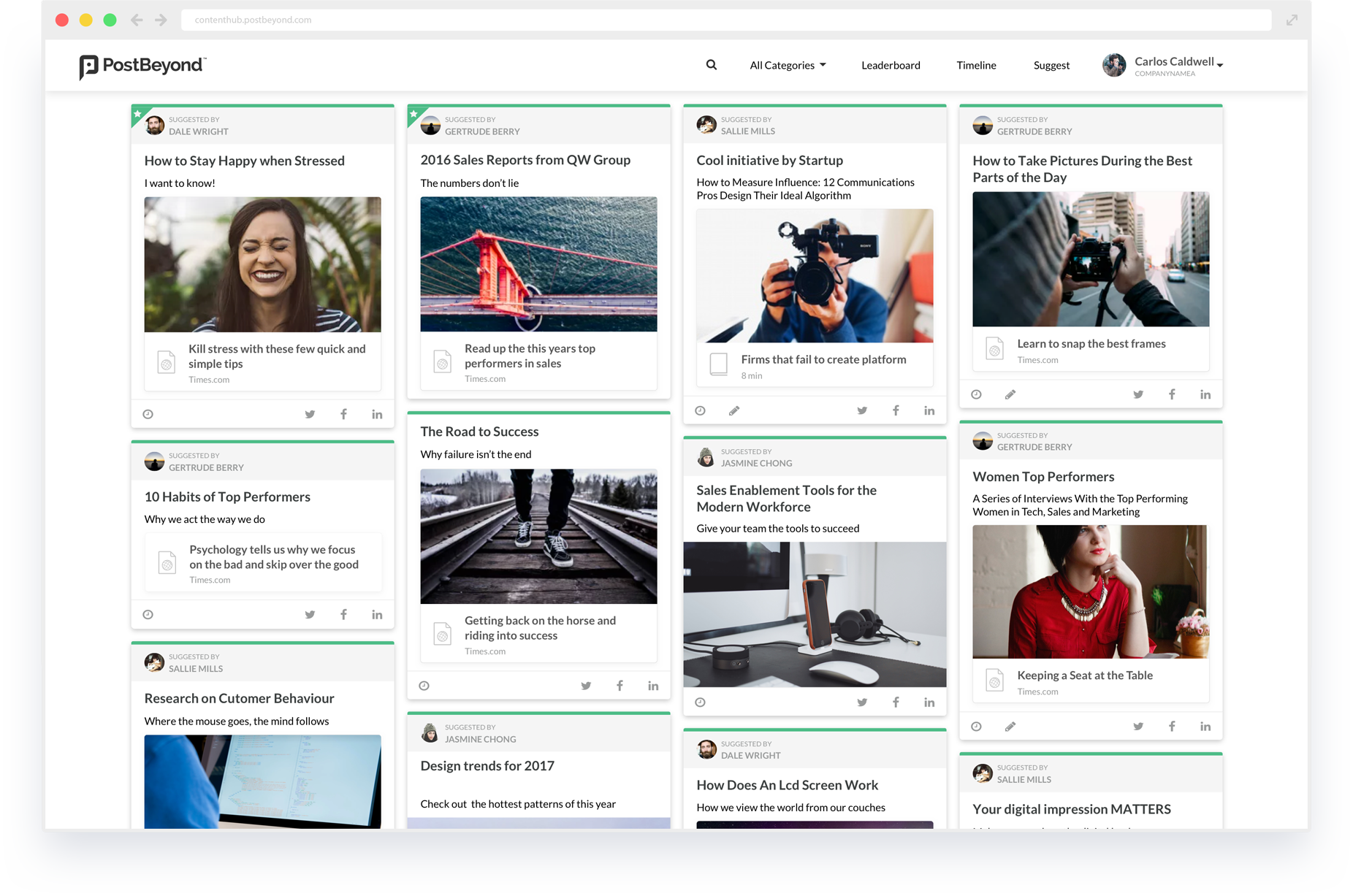
Since implementing PostBeyond, the 360insights team has created a centralized hub for employees to find the latest content and company updates.
They onboarded 80% of their employee base within just two weeks of offering the Super Connecter, and are now seeing above average adoption. Staff sign into the platform daily and managers and team leaders are hosting important and exclusive updates on the platform (like presentations and training videos) for staff to access from anywhere.
The post Customer Profile: Why Culture is Key at 360insights appeared first on PostBeyond.
